Andrew Birkbeck
Reviews By Author
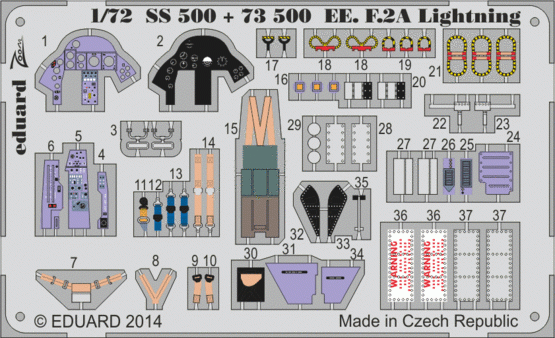
|
EE Lightning Photo Etch and Canopy MaskPublished:
There can’t be a modeler on the planet who doesn’t know the brand name Eduard, from the Czech Republic. They launched into the business of providing Photo Etched brass detail parts decades ago, and have expanded into injection molded plastic kits, resin detail parts, cloth seat belt sets, and canopy masks, and I am sure a couple of other lines, and seem to cover every scale, and every model subject out there. This review covers two products designed to be used with the Airfix English Electric Lightning F.2A in 1/72nd scale, an extremely nice kit that has recently been released. The photo etched set, 73500, comes in two frets, one of which is colored and mainly covers parts to detail the kit cockpit tub, and ejection seat. The parts are a vast improvement over what is supplied… more |
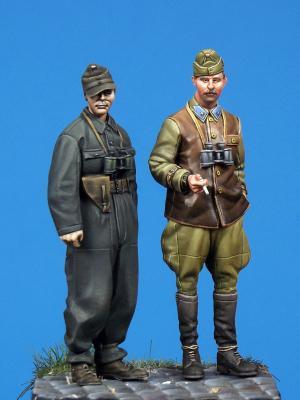
|
Hungarian Panzer Crew #2 and Hungarian SPG Officer and Panzer OfficerPublished:
Krisztine Bodi is a European figure sculptor of some renown who started his professional career producing masters for the likes of Alpine, Young Miniatures and Mantis. As so often happens, Mr. Bodi eventually decided that working for himself might be the smart thing to do, so he set up his own line of figures under the brand name “the bodi”. The range now numbers nearly 100 figures in various scales, most covering the period of the Second World War. My approach to reviewing these two figures sets (3 figures total) this time around is to provide you with photos taken by myself of the unpainted resin pieces, together with photos borrowed from the producer’s web site. This is because these beautiful sculptures deserve better than my almost non-existent figure painting skills have… more |
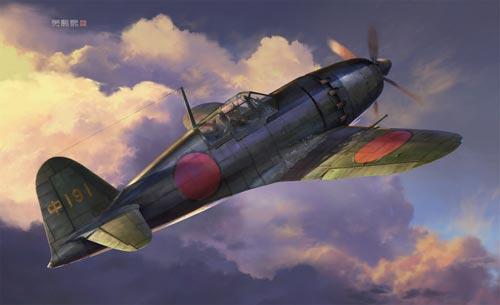
|
Mitsubishi J2M5 Raiden (Jack) Type 33Published:
The J2M Raiden (Allied code name Jack) was designed by Jiro Horikoshi (of A6M Zero fame) and built by Mitsubishi for the Imperial Japanese Navy as a land-based point interceptor. It was designed to counter high altitude bombers. It relied more upon speed, climb-rate, and armament over maneuverability to perform this task. Initial production aircraft suffered from numerous problems with its Mitsubishi Kasei 13 engine, which in turn delayed production until solutions were found. The Kasei 13 was eventually replaced with the Kasei 23a engine on J2M2 and J2M3 production aircraft. The J2M5 Type 33 aircraft, represented by the model under review here, featured an enlarged cockpit and canopy and a Kasei 26 supercharged engine, giving this variant more speed at high altitudes with a consequent… more |
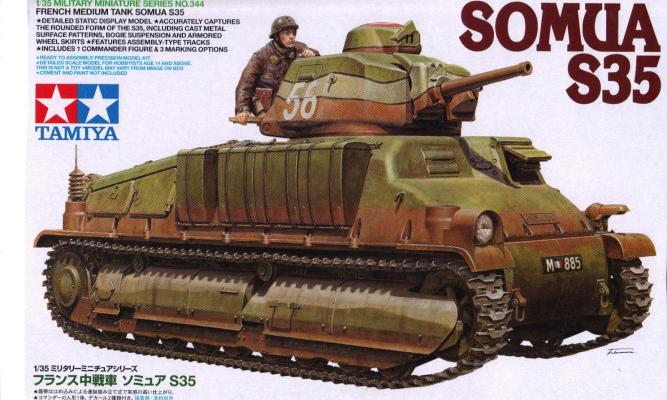
|
Somua S35 French Medium TankPublished:
Those who have studied the collapse of the mighty French military machine in May 1940 at the hands of Germany’s armed forces know that it wasn’t a lack of quality fighting equipment as much as an inability to utilize it effectively that sunk the French cause. In a number of large and small battles between the two sides, effective French leadership together with the proper tactical use of the equipment at hand had the French blunting if not outright defeating their German counterparts. And when it came to tanks in particular, the French had some pretty formidable weaponry. One of the finest tanks of the day was the French Somua S35, weighing in at 20 tons, and carrying a 47mm main gun plus a coaxial machinegun. With frontal armor at 40mm, this was equal to anything the Germans had on… more |
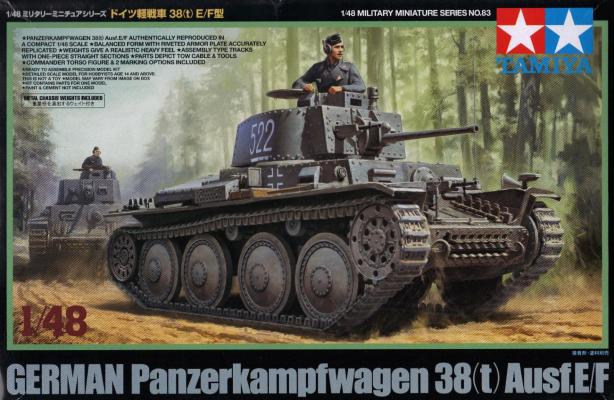
|
German Panzerkampfwagen 38(t) Ausf.E/FPublished:
During the early 1930’s, the nation of Czechoslovakia was a leading European arms manufacturer, whose armaments industry was dominated by the giant Skoda conglomerate. In 1933-34, Skoda produced what became known as the LT vz.35 light tank, and this was accepted into the Czech Army, becoming its main tank. However, the tank suffered from numerous flaws, and was much disliked by its crews. Enter the firm of CKD, a conglomeration of various engineering firms, one of whose acquisitions was the Praga Works, makers of trucks/passenger vehicles/tractors. Praga decided to go into the tank building business, selling its products both to the Czech Army, and a number of export markets. With the poor experience with the LT vs.35 in their minds, as well as the need for rearmament due to the rise… more |
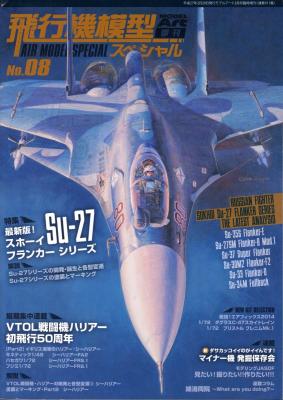
|
Model Art - Air Model Special No. 08: Sukhoi Su-27 Flanker SeriesPublished:
Model Art magazine is in my estimation the premiere monthly modeling magazine on the Japanese market. The publisher also produces a series of “Specials” on various topics, including aircraft. The magazine under discussion in this review is Model Art’s eighth “Air Model Special”, and is mainly based around modern jets, with a small smattering of WW2 subjects. The production values are first rate, utilizing high quality glossy paper, and with excellent quality photography. Japanese text is used throughout. This issue starts off with two New Kit release articles: Airfix 1/72nd Douglas C-47 Skytrain 4 pages and Airfix 1/72nd Bristol Blenheim Mk.I. Each article is accompanied by over a dozen color photos of the models under construction, including added detail… more |
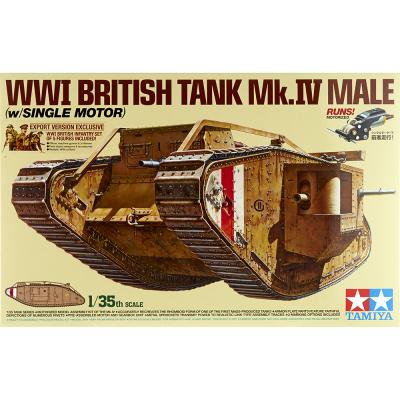
|
WWI British Tank Mk.IV Male (w/Single Motor) & British FiguresPublished:
The First World War, which marked its 100th Anniversary this year, was the first truly “Industrial War”. The slaughter on the battle fields, at sea, and in the air was aided, and the conflict prolonged, due to the industrial capacity of the belligerents to churn out the machinery of warfare. In particular, the relatively new invention of the internal combustion engine provided new killing “machines” in large numbers: the aeroplane in the sky, and the tank on the ground. And while both sides utilized aeroplanes for reconnaissance, bombing and aerial combat, it was the British and then the French who came up with the tank, the German and Austro-Hungarian forces having next to no tank production of their own during the war. The vast majority of the tanks utilized by the Germans on the… more |
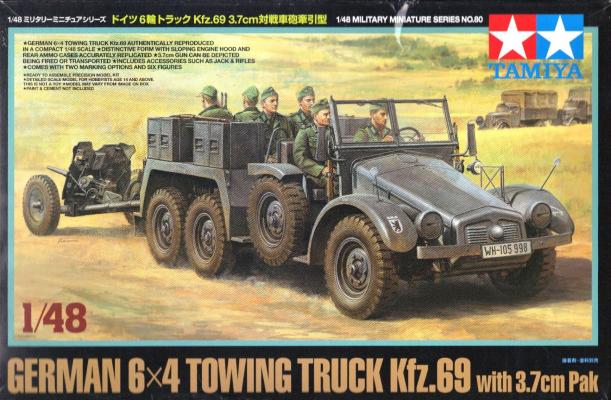
|
German 6x4 Towing Truck Kfz.69 with 3.7cm PakPublished:
Tamiya has issued another kit in their ongoing 1/48th scale military vehicle series, this time a variation on a previous kit, their Krupp Protze 6x4 troop carrier. The new kit is an artillery towing version of the Protze, along with a brand new tool 3.7 cm Pak 35/36 wheeled anti tank gun. As with all the models in this 1/48th series, the new kit is designed for a quick build due to its relatively low parts count, and superb fit of the all-plastic components. Unfortunately there are some ejection pin marks in hard to remove areas, such as the clear windshield, and the backs of the 3.7cm anti tank gun wheels, and the gun’s shield. Tamiya is falling behind their competitor’s in this area, I am afraid. Originally Tamiya incorporated cast metal chassis detail with their 1/48th… more |
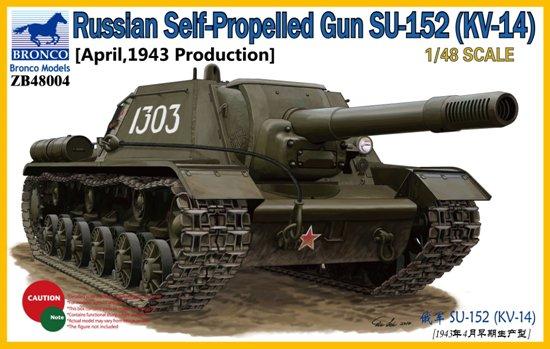
|
Russian Self-Propelled SU-152 [April 1943 Production]Published:
OverviewThe SU-152 was a large caliber self propelled assault gun base on the KV heavy tank chassis, designed to provide mobile artillery support for mechanized units to replace the antiquated and slow moving towed artillery that Soviet forces fielded at the start of the Second World War. The pilot vehicle was designed in just 25 days, and the SU-152 entered production at the Chelyabinsk tank factory in January 1943. The vehicle proved not only to be an excellent assault gun, but was also capable of destroying the German Tiger 1 and Panther tanks at long range, gaining the SU-152 the nickname among Soviet troops of “Zveroboy” or “Beast Killer”. Production of the SU-152 ended in December 1943 in favor of the ISU-152, which was based on the IS-2 tank chassis. Kit… more |
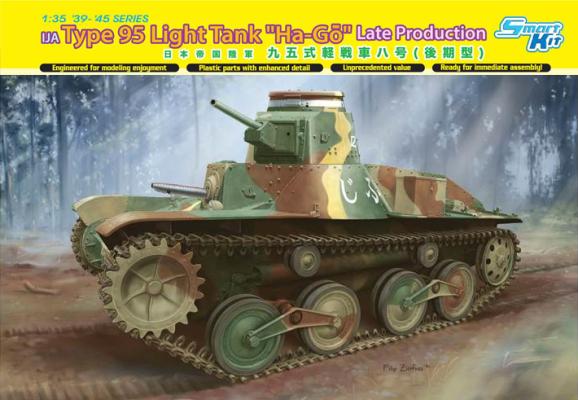
|
IJA Type 95 Light Tank "Ha-Go" Late ProductionPublished:
OverviewThis is the second model in Dragon’s range of 1/35th military vehicles covering the Type 95 Light Tank “Ha-Go”, the first one being an “Early Production” vehicle, released in 2012. Unlike the battles in Europe or the Middle East in World War Two, tanks in the Pacific Theater were not used in the massive numbers seen in Europe, nor in any major tank vs tank battles. Tanks were mainly infantry support vehicles, both on the Japanese side as well as the Allied side. The Type 95 tank saw combat against Chinese and Russia forces in Manchuria on the mainland, as well as taking part in all the Imperial Japanese Army island campaigns in WW2. The tank was fairly light, weighing just 7.4 tonnes and it was designed primarily as an infantry support tank. It was the most produced… more |
